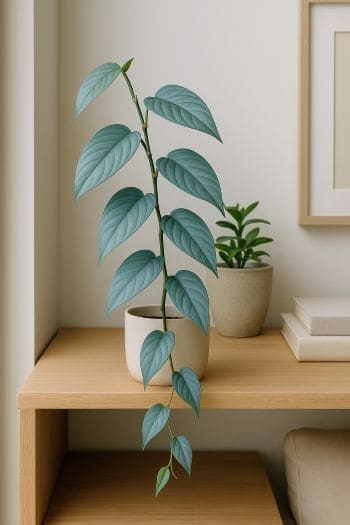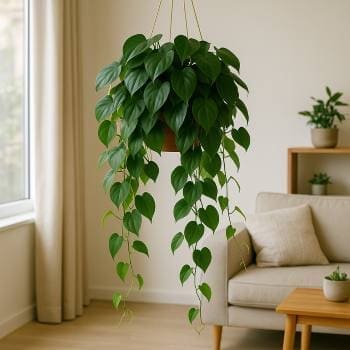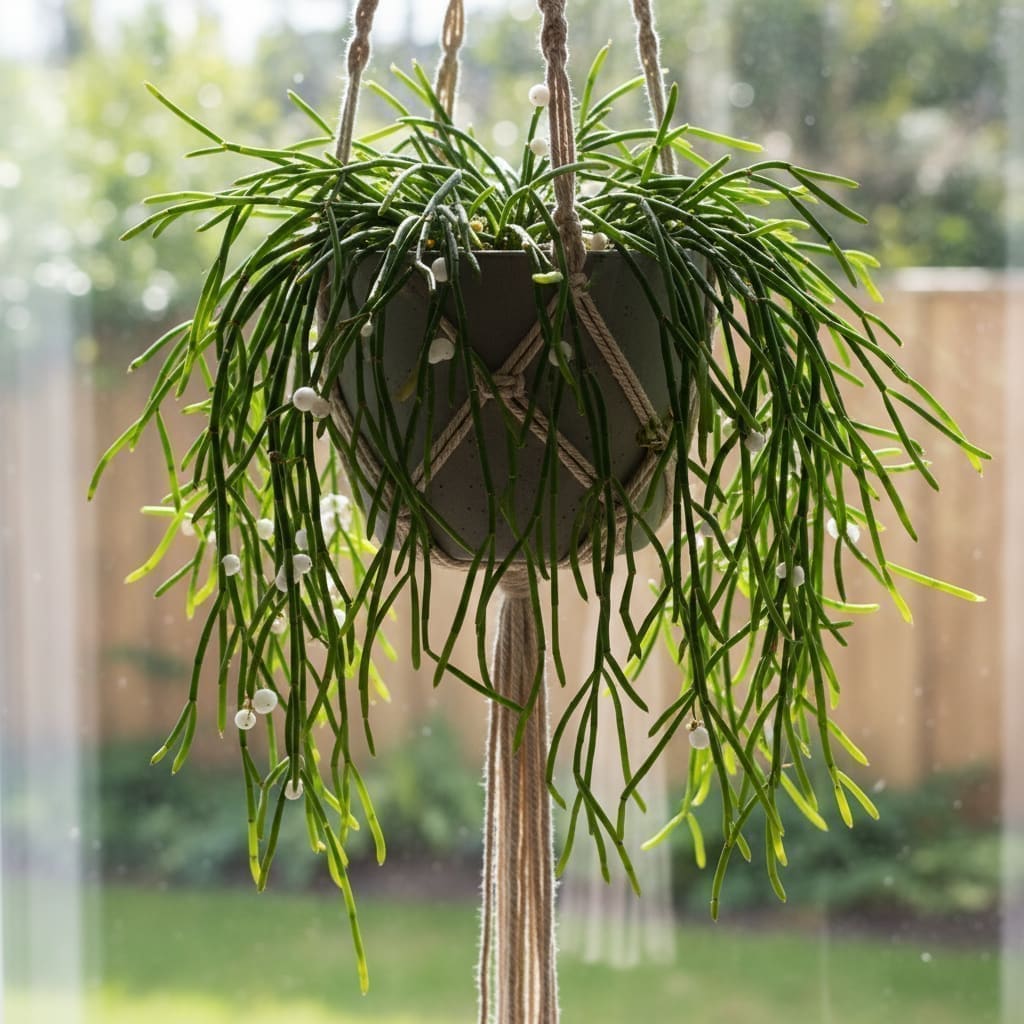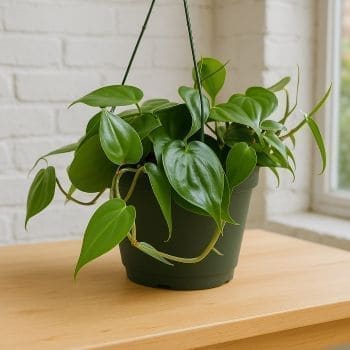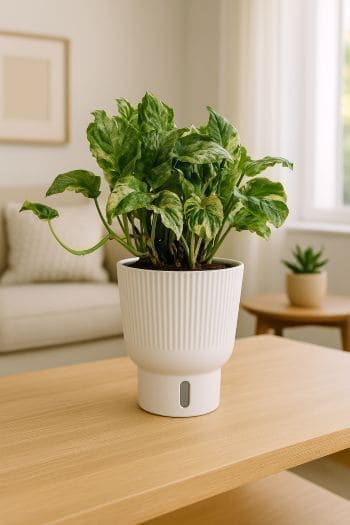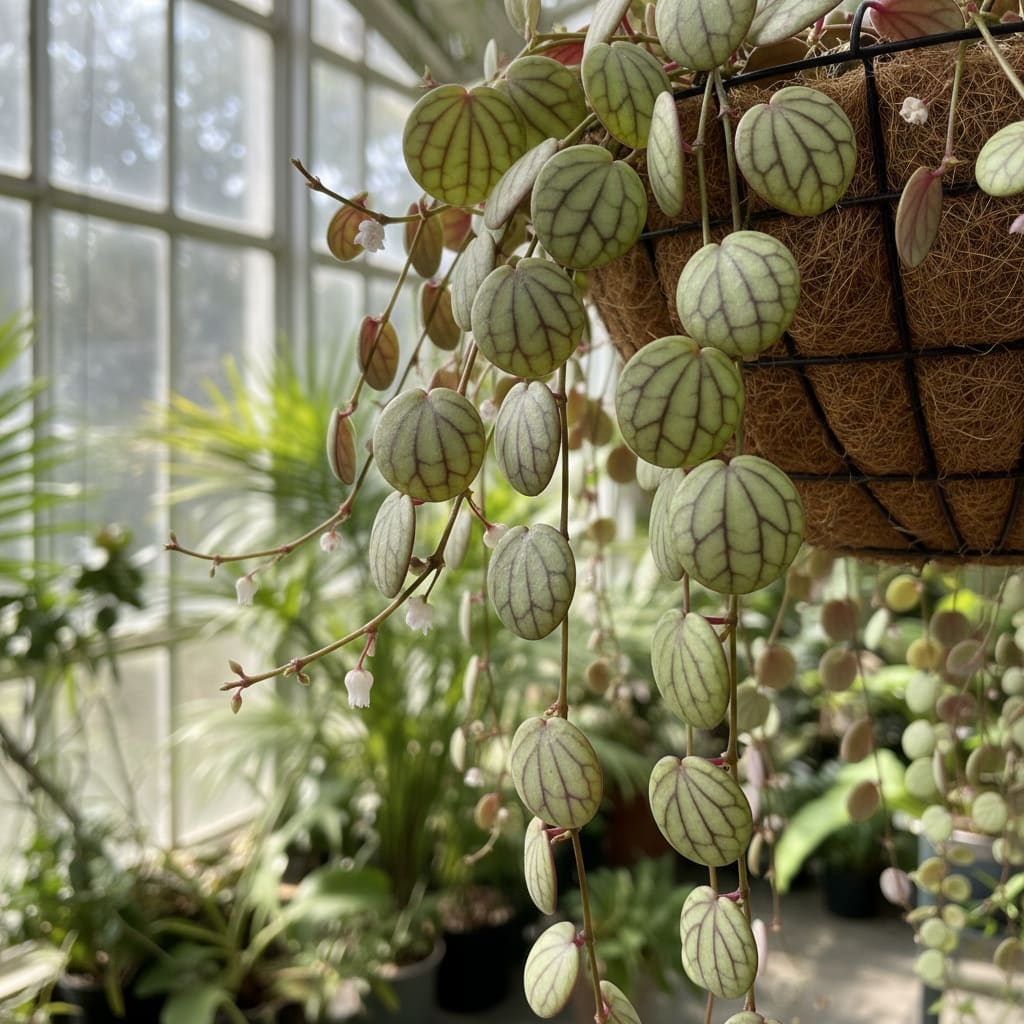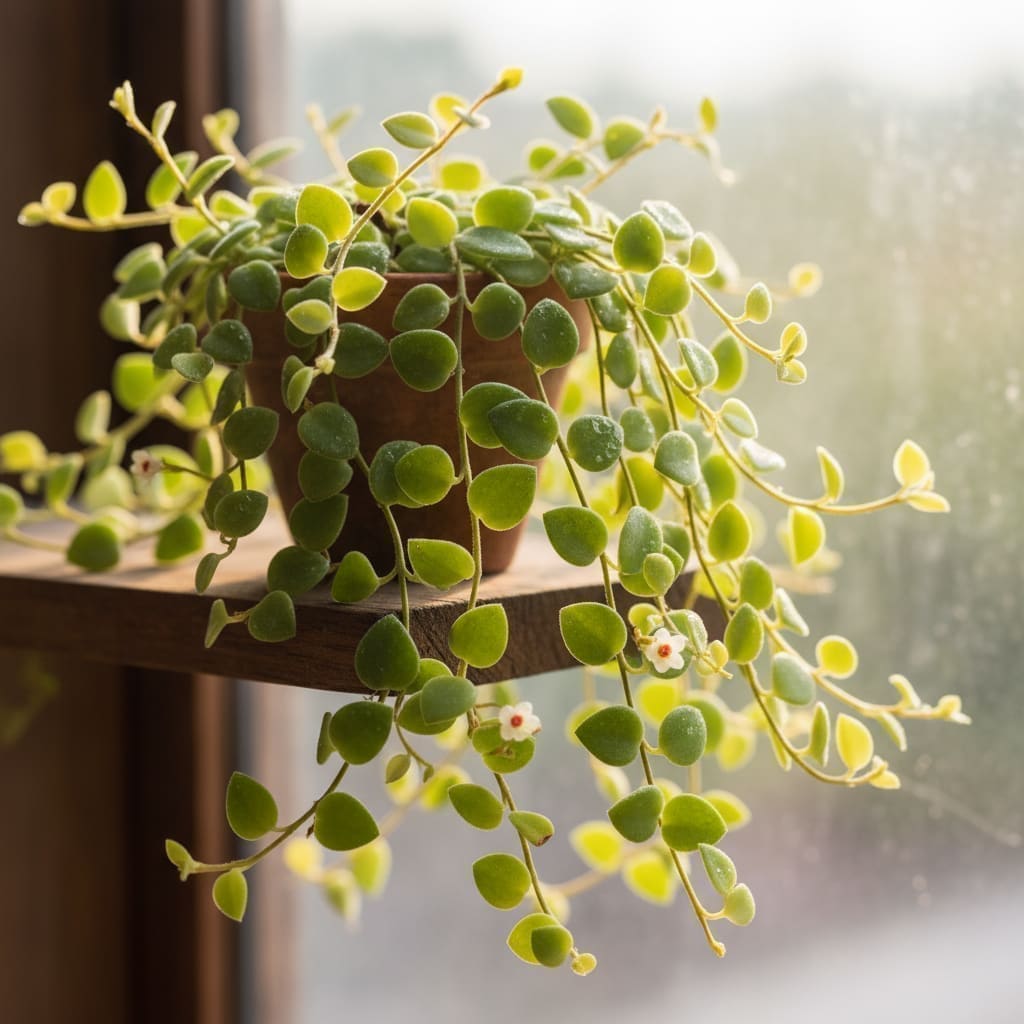Epipremnum pinnatum ‘Cebu Blue’ Care & Growing Guide
Overview
Epipremnum pinnatum ‘Cebu Blue’ is a distinctive pothos variety native to the island of Cebu in the Philippines. Known for its elongated, silvery-blue leaves and vining growth habit, this tropical evergreen is prized by indoor gardeners for its unique coloration and potential to develop dramatic fenestrations when mature. It thrives in medium to bright indirect light and adapts well to indoor conditions, making it a versatile choice for homes and offices.
As a member of the Araceae family, ‘Cebu Blue’ is related to other popular houseplants like golden pothos and monstera. With proper care, it can be grown as a trailing plant in hanging baskets or trained to climb supports for larger, more intricate foliage.
Identification & Growth Habit
The Cebu Blue Pothos produces narrow, lance-shaped leaves with a metallic blue-green sheen. Juvenile leaves are smooth-edged, while mature leaves, especially when grown vertically, may develop fenestrations—natural splits or holes similar to those of Monstera species.
- Growth form: Trailing or climbing vine.
- Leaf size: Juvenile leaves typically 2–4 inches wide; mature leaves can reach over 12 inches long with splits.
- Texture: Smooth, slightly leathery surface with subtle shimmer.
When given a moss pole, trellis, or other vertical support, the plant’s aerial roots anchor into the surface, encouraging larger, fenestrated leaves.
Light & Placement
Provide medium to bright indirect light for optimal growth. A location near an east- or north-facing window, or a few feet back from a bright south- or west-facing window, works well. Avoid prolonged low-light conditions, which can slow growth and reduce leaf size. Keep the plant out of harsh direct sun to prevent leaf scorch.
Artificial grow lights can supplement natural light, especially in darker rooms or during winter months.
Watering & Humidity
Water when the top 1–2 inches of soil are dry. Use room-temperature water and soak thoroughly until excess drains from the pot’s holes. Empty any standing water from saucers to avoid root rot. Reduce watering frequency in winter when growth naturally slows.
Humidity: Cebu Blue prefers high humidity (above 50%). Increase moisture in the air by:
- Placing a humidifier nearby
- Grouping plants together
- Positioning in humid rooms like kitchens or bathrooms
- Occasional misting of foliage
Soil & Repotting
Use a well-draining, airy mix to prevent waterlogging. A recommended blend is:
- 1 part high-quality potting soil
- 1 part orchid bark
- 1 part perlite
Repot every 1–2 years in spring when roots fill the container. Choose a pot with drainage holes and only size up by 1–2 inches in diameter to avoid overly wet soil.
Fertilizing
Feed monthly during spring and summer with a balanced liquid fertilizer diluted to half strength. This supports active growth and leaf development. Stop fertilizing in fall and winter when the plant’s growth slows.
Pruning & Training
Prune to control size, encourage bushier growth, and remove damaged leaves. Use clean, sharp scissors to cut just above a node. To train your Cebu Blue to climb:
- Install a moss pole, trellis, or other vertical support in the pot
- Gently tie or clip vines to the support
- Keep the support moist if using moss to encourage aerial root attachment
Climbing growth often produces larger, fenestrated leaves over time.
Propagation
Cebu Blue Pothos is easy to propagate via stem cuttings. Here’s a step-by-step guide:
- Select a healthy vine with at least 2–3 leaves and visible nodes.
- Cut just below a node using sterilized scissors or pruners.
- Remove the leaf closest to the cut end to expose the node.
- Place the cutting in water or directly into moist, well-draining soil.
- If rooting in water, change the water every few days to prevent stagnation.
- Keep in a warm, humid environment with bright, indirect light until roots are 2–3 inches long.
- Transplant water-rooted cuttings into soil once established.
Common Problems
Pests
- Spider mites: Look for fine webbing and speckled leaves. Treat with insecticidal soap or neem oil.
- Mealybugs: White cottony clusters on stems and leaf joints. Remove manually and treat with horticultural oil.
- Scale insects: Brown, shell-like bumps. Scrape off gently and apply insecticidal spray.
Diseases
- Root rot: Caused by overwatering or poor drainage. Trim affected roots and repot in fresh, well-draining soil.
- Leaf spot: Brown or yellow spots; remove affected leaves and improve air circulation.
Toxicity & Pet Safety
Toxicity: Cebu Blue Pothos contains calcium oxalate crystals and is toxic if ingested by pets or humans. Keep out of reach of cats, dogs, and small children. Contact a veterinarian if ingestion is suspected.
Styling & Decor Tips
- Hang in a basket to showcase trailing vines.
- Train up a moss pole for a tropical, vertical display with potential fenestrations.
- Pair with contrasting foliage plants for visual interest.
- Use decorative pots that complement the silvery-blue leaf tones.
Varieties & Cultivars
‘Cebu Blue’ is itself a cultivar of Epipremnum pinnatum. While there are other Epipremnum varieties, such as golden pothos (E. aureum) and jade pothos, Cebu Blue is unique for its leaf color and fenestration potential. No widely recognized sub-cultivars of Cebu Blue are currently established.
Buying Tips & Maturity
When selecting a plant, look for healthy, pest-free foliage with no yellowing or mushy stems. Younger plants will have smaller, unfenestrated leaves; with time and vertical support, mature plants can produce larger, split leaves. Ensure the plant is well-rooted in its pot before purchasing.
Seasonal Care
- Spring/Summer: Active growth; maintain regular watering, monthly feeding, and high humidity.
- Fall: Gradually reduce feeding; monitor watering needs as growth slows.
- Winter: Minimal growth; water less frequently, avoid cold drafts, and provide supplemental light if needed.
FAQ
- Why are my Cebu Blue leaves turning yellow? This can result from overwatering, poor drainage, or insufficient light. Check soil moisture and adjust care accordingly.
- Can Cebu Blue Pothos grow in low light? It can tolerate low light for short periods, but growth will slow, and leaves may be smaller. Medium to bright indirect light is best.
- How do I encourage fenestrations? Provide a vertical support like a moss pole, maintain bright indirect light, and ensure consistent care to promote mature leaf development.
- Is Cebu Blue Pothos fast-growing? Under optimal conditions, it grows moderately fast, producing new leaves regularly during the growing season.
- Can I grow Cebu Blue outdoors? In warm, frost-free climates, it can be grown outdoors in shaded areas. Protect from direct sun and cold temperatures below 50°F (10°C).
Source: The Spruce
